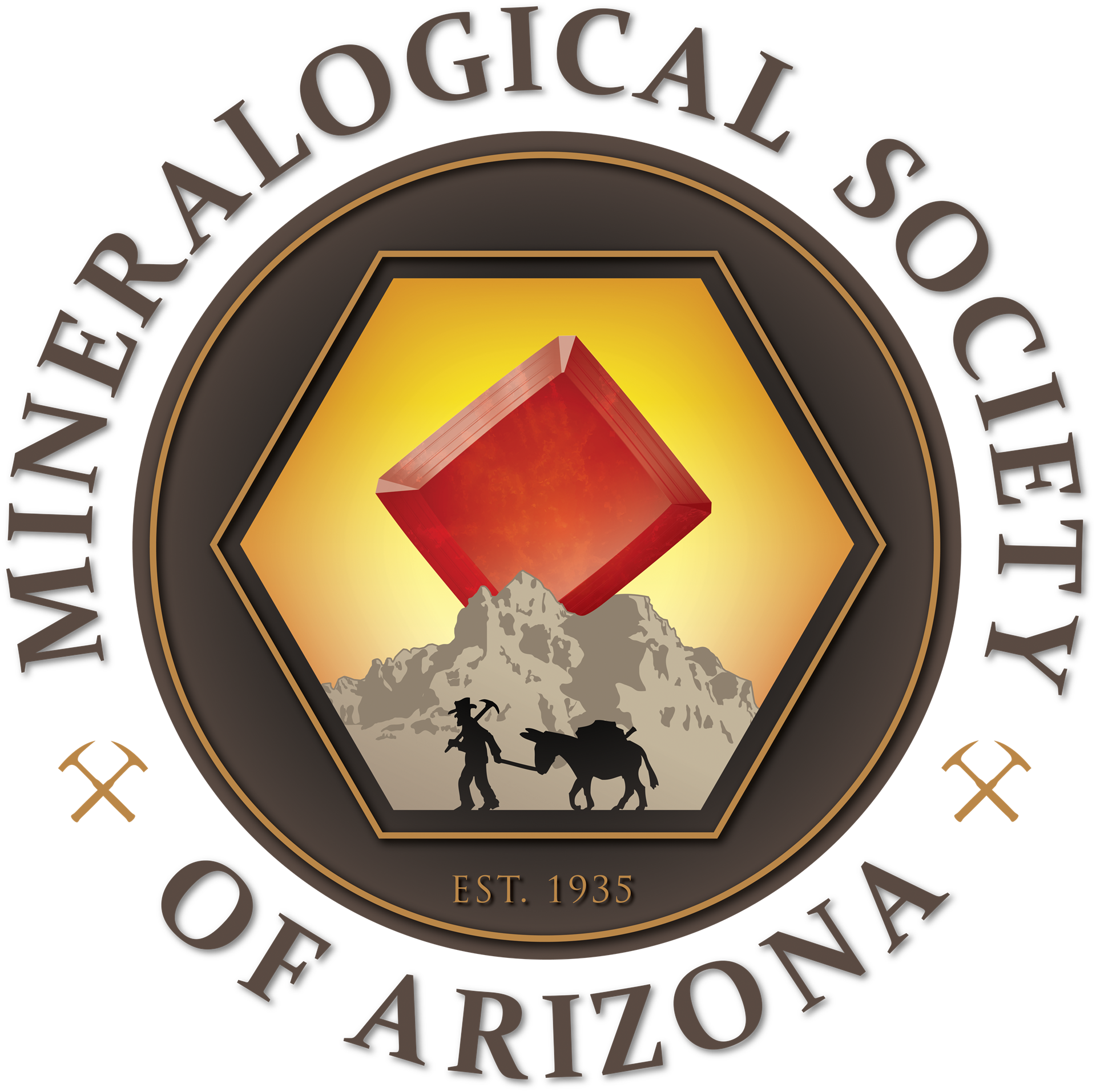
MSA MEETING PROGRAM & PLACE
*** LIMITED IN-PERSON & ZOOM MEETING ***
Thursday, March 17, 2022 @ 7:30 pm Arizona time.
"Identifying Critical Mineral Resources in New Mexico"
Presented by Dr. Virginia “Ginger” McLemore

* March 17th meeting is on 3rd Thursday.
* Registration required to receive Zoom Link
* RSVP required as seating limited to (60) members
* Masks Optional
* No Refreshments
Our March 17th program “Identifying Critical Mineral Resources in New Mexico" will be presented by Dr. Virginia “Ginger” McLemore .
Critical minerals are mineral resources that are essential to our economy and whose supply may be disrupted; many critical minerals are 100% imported into the U.S. Many of these critical minerals have been identified in New Mexico.
Recently exploration has occurred for rare earth elements (REE) in several areas in NM. REE-Th-U veins are found in the Gallinas, Capitan, and Cornudas Mountains and Laughlin Peak-Chico Hills; all are associated with Tertiary alkaline igneous rocks. Disseminated Y-Zr deposits in Proterozoic nepheline syenite are known at Pajarito Mountain (Mescalero Apache Indian Reservation). Tellurium production has occurred from the Lone Pine mine, Wilcox district and beryllium has been produced from pegmatites in NM. Other critical minerals are associated with various mineral deposits in NM. For example, vanadium and molybdenum, by-products of uranium mining, as well as selenium and REE, are associated with sandstone uranium deposits in the Grants uranium district. Rhenium is found in porphyry copper and porphyry molybdenum deposits in NM. Both uranium and potash are important commodities in NM and were considered critical minerals. New Mexico is the leading state in potash production and has produced significant uranium in the past. Coal deposits are abundant in the state and could be source of several critical minerals (REE, Se, V, Ge), but more work is needed to fully understand the distribution of critical minerals in NM coal deposits. Mining districts in NM that contain critical minerals have been previously identified. However, specific mines, occurrences, deposits and favorable geologic terranes within these mining districts and elsewhere in NM have not been well defined for critical minerals. Therefore, geologists at NM Bureau of Geology and Mineral Resources (NMBGMR) are creating a database of critical minerals mines and occurrences in the state. We also are creating a database of existing chemical analyses, available drill core and other subsurface information stored at NMBGMR. Legacy data as well as newly acquired data are being used. These databases will be available to government officials, mining companies and the general public, in most cases online through the NMBGMR interactive map (see https://maps.nmt.edu/), openfile reports, or by request. Not only are these data required in order to delineate favorable geologic terranes and priority areas containing potential critical minerals for the USGS mandate, but identification and examination of critical minerals is a high priority of the NMBGMR. These databases will aid in refinement of the geologic models of critical minerals, needed for exploration. This project also is important to the state of NM because mineral resources must be identified before land exchanges, withdrawals or other land use decisions are made by government officials. Future mining of potential economic critical minerals will directly benefit the economy of NM. Another aspect of this project is the training of our future workforce since students at NM Tech will be hired to work on this project.
Ginger McLemore is the Principal Senior Economic Geologist with the New Mexico Bureau of Geology and Mineral Resources, a research division of New Mexico Tech. She holds B.S. degrees in Geology and Geophysics (1977) and M.S. degree in Geology (1980) from New Mexico Tech and received her Ph.D. in Geoscience from University of Texas at El Paso in 1993.
She also is an adjunct professor at New Mexico Tech (Earth and Environmental Science and Mineral Engineering Departments) and teaches New Mexico Mineral Deposits, Geology of the Industrial Minerals, Uranium Geology, and Geology of Strategic and Critical Minerals. She is a Certified Professional Geologist (#CPG-7438) with the American Institute of Professional Geologists.
Currently she is the faculty advisor for the AIPG student chapter and the New Mexico Shooting Sports Club. Her research topics include geology of critical minerals, economic geology of New Mexico, and weathering of mine wastes.
Mark your calendars for March 17th as Mineralogical Society of Arizona is honored to host Dr. Ginger McLemore for a very special program!
This will be BOTH a virtual event via Zoom and Limited In-Person. Link to the meeting will be sent in email when you register for the event.
Meeting starts at 7.30PM Arizona time.